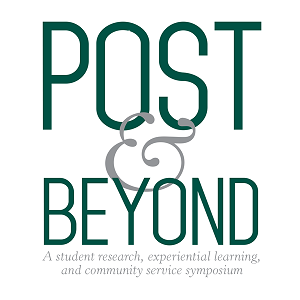Removal of Bacterial Biofilm Matrix Using Novel Anti-Biofilm Compounds to Enhance the Antimicrobial Susceptibility of Bacteria Causing Chronic Infections
Faculty Mentor
Thomas J. Inzana
Area of Research
Veterinary Biomedical Sciences
Major
Doctor of Veterinary Medicine
Description
Introduction: Chronic bacterial infections often result in biofilm formation in the infected site. Bacteria within a biofilm are more resistant to antibiotics due to extracellular matrix (ECM) formation. Removal of most of the ECM should enhance the efficacy of antibiotics and clear the bacteria more quickly. For some Infections, such as endocarditis, surgery is required to replace an infected valve due to advanced biofilm formation. Treatment with compounds that remove most of the ECM in combination with antibiotics may abrogate the need for such surgery. Methods: Histophilus somni (responsible for bovine respiratory disease and myocarditis) and Enterococcus faecalis (isolates from human endocarditis) were grown in supplemented Columbia broth or Tryptic soy broth, respectively. Biofilms were formed in 96-well polystyrene plates or tissue cultures for 3 days at 37°C. Biofilms were stained with crystal violet, the wells rinsed with phosphate buffered saline, and the stain solubilised with 95% EtOH. Biofilms were quantified by determining the absorbance of each sample at 562 nm in comparison to controls. Biofilms on tissue cultures were examined by confocal laser scanning microscopy. Compounds from the Virginia Tech Center for Drug Discovery were added to established biofilms for up to 24 hours before staining with crystal violet to assess ECM removal. Results: Of 5000 compounds screened, three removed 75% or more of the H. somni (bovine myocarditis pathogen) biofilm, and two (labelled as compound A or compound B) were particularly effective. One compound or the other at a concentration of >30 mM also removed more than 50% of the biofilm ECM of several E. faecalis endocarditis isolates. Neither compound was toxic for bovine respiratory epithelial cells at the concentrations used (30-100 mM). Combining both compounds could enhance biofilm removal, and could broaden the efficacy of biofilm removal for multiple species and strains. Conclusions: Removal of most of the bacterial biofilm by non-toxic compounds may greatly aid the effectiveness of antibiotic therapy and improve patient management. Studies are currently underway to determine if these compounds lower the biofilm MIC of these pathogens and remove biofilms from tissue culture cells.
Removal of Bacterial Biofilm Matrix Using Novel Anti-Biofilm Compounds to Enhance the Antimicrobial Susceptibility of Bacteria Causing Chronic Infections
Introduction: Chronic bacterial infections often result in biofilm formation in the infected site. Bacteria within a biofilm are more resistant to antibiotics due to extracellular matrix (ECM) formation. Removal of most of the ECM should enhance the efficacy of antibiotics and clear the bacteria more quickly. For some Infections, such as endocarditis, surgery is required to replace an infected valve due to advanced biofilm formation. Treatment with compounds that remove most of the ECM in combination with antibiotics may abrogate the need for such surgery. Methods: Histophilus somni (responsible for bovine respiratory disease and myocarditis) and Enterococcus faecalis (isolates from human endocarditis) were grown in supplemented Columbia broth or Tryptic soy broth, respectively. Biofilms were formed in 96-well polystyrene plates or tissue cultures for 3 days at 37°C. Biofilms were stained with crystal violet, the wells rinsed with phosphate buffered saline, and the stain solubilised with 95% EtOH. Biofilms were quantified by determining the absorbance of each sample at 562 nm in comparison to controls. Biofilms on tissue cultures were examined by confocal laser scanning microscopy. Compounds from the Virginia Tech Center for Drug Discovery were added to established biofilms for up to 24 hours before staining with crystal violet to assess ECM removal. Results: Of 5000 compounds screened, three removed 75% or more of the H. somni (bovine myocarditis pathogen) biofilm, and two (labelled as compound A or compound B) were particularly effective. One compound or the other at a concentration of >30 mM also removed more than 50% of the biofilm ECM of several E. faecalis endocarditis isolates. Neither compound was toxic for bovine respiratory epithelial cells at the concentrations used (30-100 mM). Combining both compounds could enhance biofilm removal, and could broaden the efficacy of biofilm removal for multiple species and strains. Conclusions: Removal of most of the bacterial biofilm by non-toxic compounds may greatly aid the effectiveness of antibiotic therapy and improve patient management. Studies are currently underway to determine if these compounds lower the biofilm MIC of these pathogens and remove biofilms from tissue culture cells.

